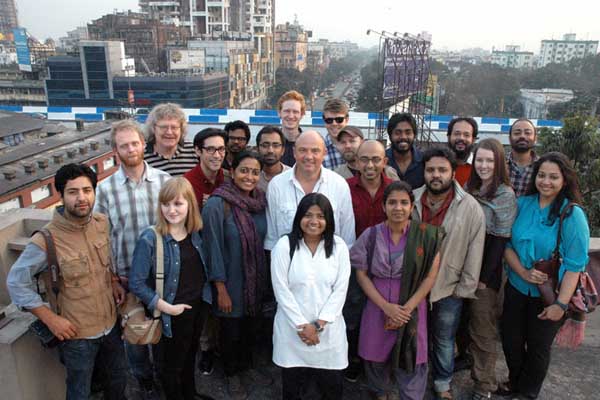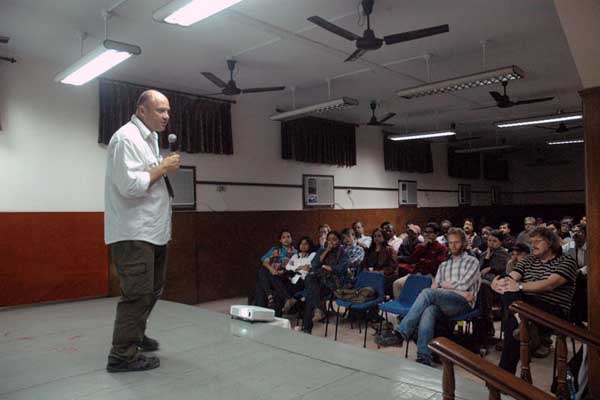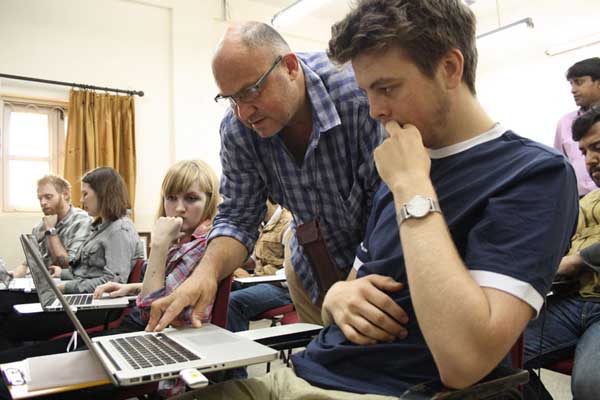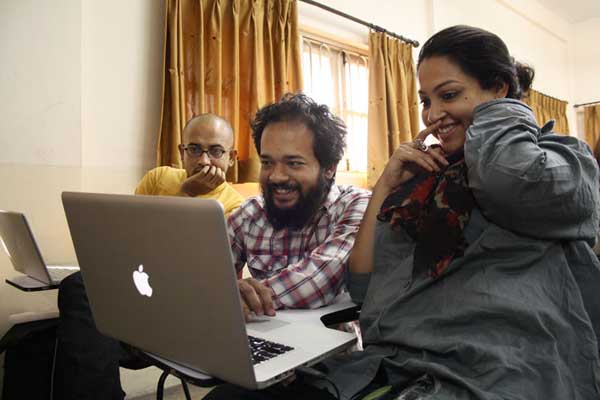Chronicler of conflicts – The Times of India.
?By?Jaideep Mazumdar


Greg Sebastian Marinovich is the only one of the ‘Bang Bang Club’s’ four members to be standing on his feet today. Two are dead and the third’s legs have been amputated. Between them, they share two Pulitzers and a host of other prestigious awards from all over the world. Greg, 50, co-authored a book on the ‘club’ that was made into a film two years ago. And what a film it was: a visual narrative on the lives of four ‘conflict photographers’–all white South Africans who grew up in the apartheid regime, opposed it and exposed the apartheid regime-sponsored violence to the world-whose lives intertwined and took them to many parts of the world to record telling images of war and strife.
Greg, who was in Kolkata to conduct a workshop for photographers from India, Nepal and?Bangladesh?(Editor’s note: organised by Pathshala in Bangladesh and Oslo University College in Norway), told TOI about his work and experiences. “I didn’t see open racism as a kid in?Johannesburg?because apartheid had been cemented by them. Blacks were supposed to be in some vocations and that was that. It was only later, in my teens, that I started questioning the established order. In University, I used to get into frequent brawls with racist whites, who would call the blacks ‘oxygen wasters’ and other such derogatory stuff,” recalled Greg, 50. He was conscripted into the army in 1983 and his refusal to carry a rifle marked him as a ‘communist’ and invited harsh punishment. After a stint in Botswana, he returned to?South Africa?where, after many odd jobs, he started documenting the social impact of apartheid on blacks.


“The apartheid regime had by then started encouraging violence between different tribes of the blacks to show to the world that blacks couldn’t rule themselves and ghastly violence became the order of the day in the ‘bantustans’, the black enclaves. I started sneaking into these enclaves and filming the gore. It was one of these photos-a?Zulu?set on fire by?African National Congresssupporters in September, 1990-that won him the Pulitzer the next year.
It was at the time that he was risking his life to document the white minority government-inspired violence between blacks that he met his three friends:?Kevin Carter, Ken Oosterbroek and?Joao Silva. They photographed many heart-wracking and soul-wrenching scenes of violence and unimaginable brutality in conflict zones all over the world. “We became very good?friendsand all of us shared the same socialist ideology,” said Greg. The first of the quartet to go was Ken, who fell to friendly fire from peacekeepers near Johannesburg in April 1994. Greg was also injured that time. In March 1993, while on a trip to?Sudan?to document the conflict there, Kevin took photos of a starving child lying on the ground with a vulture waiting for the child to die. This stark photo of the famine caused by conflict in Sudan won Kevin the Pulitzer next year. “But many started questioning why he didn’t save the child. Kevin, who was on drugs, somehow lost his moral compass and committed suicide a few months later. Joao was injured in southernAfghanistan?in October 2010 and both his feet were amputated.
“I have suffered serious injuries four times at various places. But that is to be expected. You cannot go into a conflict situation and expect to emerge unscathed every time. All that talk about conflict photographers’ heroism is nonsense. What we go through during the brief period we are in such places is nothing compared to what the people there go through. Death or injury is part of?the game, and you don’t sit down a cry,” Greg said. “The book (‘Bang Bang Club’) is totally anti-hero,” he adds.
Greg says that when he looks back, he feels that the situations where he sustained injuries weren’t that risky. “It was the ones I came out of without a nick, like the many times I filmed people massacring each other with machetes and spears, that were much more dangerous,” he tells TOI. He has had many near-death experiences, and one that he recalls vividly was during his trip to Afghanistan when Pakistani jet fighters started dropping cluster bombs. “We took shelter in an abandoned house and one cluster bomb hit a beehive inside it. The bees attacked us. We had to make a choice between bees and bombs, and we decided to risk the bombs rather than get stung to death by the bees. We managed to evade the bombs,” Greg says matter-of-factly. Recounting such nerve-wracking experiences with batting an eyelid can only come to the battle-hardened. But Greg gave it all up 12 years ago. “My time was up. I was lucky, many of my friends weren’t. Some who came out alive suffer from?depression?and other disorders. A few had to be institutionalized,” he says.
But its not that he has broken off from the subject completely; Greg documents the aftermath of conflicts these days, like the lives of young child soldiers who are adults now. Besides mentoring photographers across the world.

Works and achievment praisworthy?.